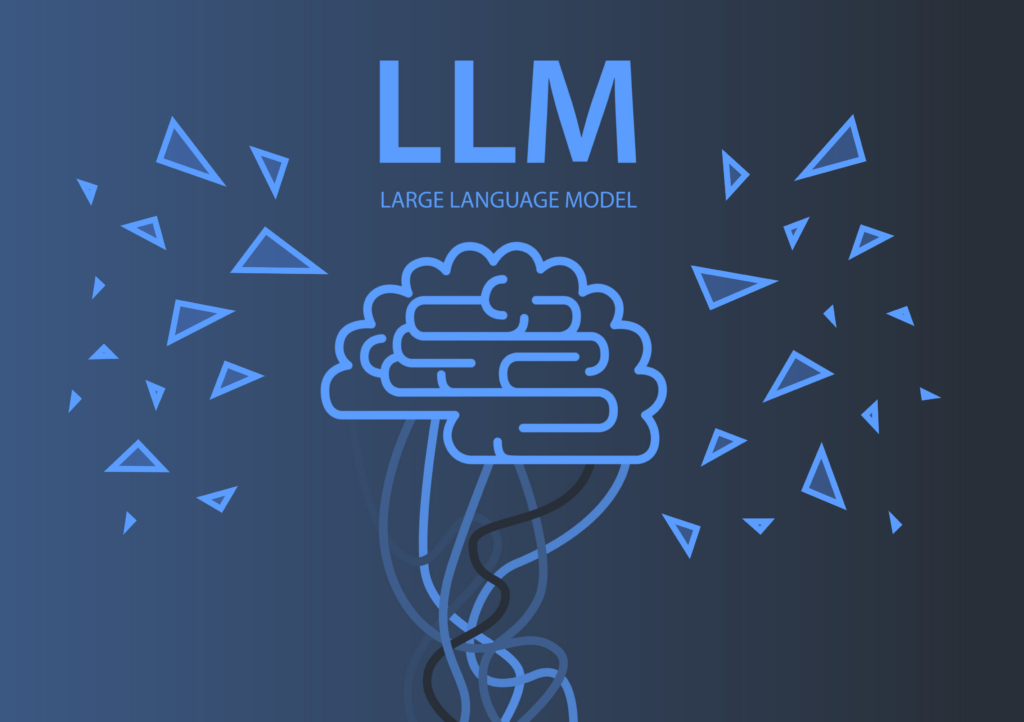
In the ever-evolving field of Natural Language Processing (NLP), transfer learning and pre-trained language models have emerged as game-changers. They offer the ability to leverage knowledge from vast linguistic datasets, accelerating the development of NLP applications.
In this comprehensive guide, we will explore the fascinating world of transfer learning and pre-trained language models. We'll delve into their history, the intricacies of fine-tuning, domain adaptation challenges, and the practical considerations in utilizing these models.
The concept of transfer learning in NLP has its roots in the early 2010s, with researchers exploring ways to transfer knowledge learned from one task to another. Transfer learning and pre-trained language models have become integral components of the modern NLP landscape. Their evolution can be traced through a rich history of developments and innovations. Here, we delve into the background and historical context of transfer learning and pre-trained language models in NLP:
In the early days of NLP, traditional rule-based systems and statistical models dominated the field. These approaches required extensive handcrafted features and domain-specific knowledge, making them labor-intensive and often lacking in adaptability. Progress was incremental, and the performance of NLP systems was limited by the availability of high-quality annotated data and linguistic resources.
A significant breakthrough in NLP came with the introduction of word embeddings, such as Word2Vec and GloVe. These techniques represented words as dense vector representations in continuous vector spaces, capturing semantic relationships between words. Word embeddings allowed models to capture context and meaning from large text corpora, making them a key stepping stone towards more advanced methods.
Transfer learning, a concept borrowed from computer vision, began to gain traction in NLP. Researchers realized that models pre-trained on vast amounts of text data could serve as valuable starting points for a wide range of NLP tasks. This approach leveraged the knowledge encoded in pre-trained models and fine-tuned them for specific tasks, reducing the need for extensive task-specific data and feature engineering.
One of the pioneering pre-trained language models was ELMo (Embeddings from Language Models), introduced in 2018. ELMo learned contextual word representations by training on a massive corpus of text data. It demonstrated substantial improvements in various NLP benchmarks by providing models with deeper linguistic context.
The introduction of the Transformer architecture in the paper "Attention Is All You Need" by Vaswani et al. in 2017 marked a pivotal moment in NLP. Transformers replaced recurrent neural networks (RNNs) and convolutional neural networks (CNNs) as the go-to architecture for sequence-to-sequence tasks. Their self-attention mechanism allowed models to consider global dependencies within sequences, making them highly effective for capturing contextual information.

Transformers quickly became the foundation for a new generation of pre-trained language models. One of the most influential models in this category is BERT (Bidirectional Encoder Representations from Transformers), introduced by Google AI in 2018. BERT demonstrated the power of pre-training on massive text corpora and fine-tuning for specific tasks. It achieved state-of-the-art results across a wide range of NLP benchmarks.
In the wake of BERT's success, numerous variations and architectures of pre-trained models emerged. Models like GPT-2 (Generative Pre-trained Transformer 2) by OpenAI and RoBERTa by Facebook AI pushed the boundaries of model size and pre-training data, achieving remarkable language understanding and generation capabilities. These models showed that larger architectures and more data could lead to significant performance gains.
Transfer learning and pre-trained models continue to evolve rapidly. Ongoing research focuses on scaling models to even larger sizes, reducing their environmental footprint, and exploring methods to make them more interpretable and controllable. Additionally, addressing societal challenges, such as bias and disinformation, remains a priority.
In conclusion, the history of transfer learning and pre-trained language models in NLP is marked by a progression from rule-based systems to data-driven models. The emergence of transfer learning and the Transformer architecture ushered in a new era of NLP, where models pre-trained on large text corpora serve as the foundation for a wide range of applications, revolutionizing the field and raising important ethical considerations. Over the years, pre-trained language models have become a cornerstone, revolutionizing NLP by providing a starting point for various tasks. For an in-depth historical perspective, you can refer to this insightful article.
Fine-tuning pre-trained language models is a critical step in customizing them for specific tasks. However, it's not without challenges. One significant hurdle is the risk of overfitting when adapting to a new task, as these models are often pre-trained on massive, diverse datasets.
Additionally, catastrophic forgetting, where the model loses knowledge of the original task, can occur. Fine-tuning pre-trained language models is a powerful approach in NLP that allows models to adapt to specific tasks or domains. However, this process is not without its challenges and considerations.
One of the primary challenges in fine-tuning is the quality and quantity of labeled data. To fine-tune a model effectively, you need access to a reliable dataset that is representative of the task or domain you're targeting. Obtaining such data, especially for specialized or niche domains, can be challenging. Low-quality or biased training data can negatively impact the model's performance.
Data representation is another critical aspect. Fine-tuning requires that data be preprocessed and represented in a format compatible with the pre-trained model's input requirements. This includes tasks such as tokenization, padding, and creating attention masks.
Ensuring consistency in data representation across the dataset can be a non-trivial task. Overfitting is a common concern during fine-tuning, particularly when working with limited datasets. Overfitting occurs when the model becomes overly specialized for the training data and struggles to generalize to new, unseen examples.
To mitigate overfitting, regularization techniques and careful dataset split strategies are necessary. Hyper-parameter tuning is essential in fine-tuning. Selecting appropriate hyper-parameters, such as learning rates, batch sizes, and optimization algorithms, can significantly impact the success of the fine-tuning process. Fine-tuning often involves an iterative process of experimentation to find the optimal hyper-parameters.
The complexity of the target task also plays a role. Some tasks may inherently be more complex than others, requiring more extensive architectural modifications or larger datasets to achieve satisfactory results. Understanding the intricacies of the task is crucial for effective fine-tuning.
Domain adaptation can be challenging when fine-tuning for domain-specific tasks. Ensuring that the model generalizes well to various sub-domains within the larger domain can be tricky. Adapting to diverse nuances and terminologies may require additional effort and data.
Catastrophic forgetting is a phenomenon where fine-tuning causes the model to forget knowledge learned during pre-training. Strategies such as progressive learning or using a diverse pre-training corpus can help mitigate this issue.
Bias and fairness are important considerations. Fine-tuning on biased or unrepresentative data can reinforce existing biases or introduce new ones. Mitigating bias and ensuring fairness in fine-tuned models is an ongoing research challenge.
Fine-tuning can also be resource-intensive. Acquiring the necessary computational resources, including GPUs or TPUs, can be expensive and challenging for smaller organizations. Selecting appropriate evaluation metrics and designing evaluation protocols are crucial for assessing the model's performance accurately on the target task. The choice of metrics can significantly impact the interpretation of results.
The transferability of knowledge from pre-training to the target task varies across models. Some models may require more extensive fine-tuning layers or a larger task-specific dataset to achieve desirable performance.
Model size is a practical concern. Larger pre-trained models may demand even more substantial computational resources for fine-tuning, limiting their accessibility to organizations with limited resources.
Privacy and security are paramount when fine-tuning sensitive data. Careful data anonymization and secure model deployment practices are essential to address these concerns.
Finally, as models become more complex, interpreting their decisions and understanding why they make specific predictions becomes challenging. Ensuring transparency and interpretability in fine-tuned models is an ongoing area of research.
Despite these challenges, fine-tuning remains a valuable technique for adapting pre-trained language models to a wide range of practical NLP tasks, provided that these considerations are carefully addressed. To navigate these intricacies, researchers have explored various techniques and strategies. You can gain further insights into fine-tuning challenges in the research paper and practical tips in this article.
Read more: StageZero's guide and checklist to privacy and AI and Data diversity and why it is important for your AI models

Transferring knowledge from a pre-trained model to different data domains or languages is a common requirement in real-world applications. This process, known as domain adaptation, presents its own set of complexities. It involves ensuring that the model can generalize well to data it hasn't explicitly seen during pre-training.
Techniques such as adversarial training and data augmentation have been employed to address these challenges. Furthermore, the importance of having diverse and representative training data cannot be overstated. Deep learning in the field of computer vision faces significant challenges related to data availability and distribution. Traditional transfer learning methods require substantial labeled data for training and perform well only when the target data distribution matches the source data used for training. However, this is often not the case, especially when dealing with diverse datasets. As a solution to this problem, Domain Adaptation has emerged as a powerful technique.
Domain Adaptation aims to enhance a model's performance on a target domain with limited labeled data by leveraging knowledge learned from a related source domain with ample labeled data. The primary goal is to adapt a pre-trained model to excel on new data without the need for re-training from scratch. This approach not only saves computational resources but can also eliminate the necessity for labeled target domain data altogether.
Domain Adaptation falls under the umbrella of transfer learning, focusing on aligning feature representations between the source and target domains. The core principles and techniques of Domain Adaptation include categorizing it into various types based on target domain labeling and feature space characteristics. These categories encompass Supervised Domain Adaptation, Semi-Supervised Domain Adaptation, Weakly Supervised Domain Adaptation, and Unsupervised Domain Adaptation.
Another fundamental aspect of Domain Adaptation is feature-based adaptation, where a transformation is learned to extract invariant feature representations across domains. This transformation minimizes the distribution gap between the domains in the feature space while preserving the original data's essential characteristics.
Reconstruction-based adaptation methods concentrate on learning feature representations that not only classify source domain data effectively but also enable the reconstruction of target domain data. Adversarial-based Domain Adaptation seeks to minimize the distribution discrepancy between source and target domains by using adversarial objectives, often involving domain classifiers or generative adversarial networks (GANs) to create domain-invariant features.
An alternative approach involves domain mapping, where data from one domain is mapped to resemble another, often employing conditional GANs for pixel-level translation. Ensemble methods are also used, with self-ensembling techniques reducing computation costs compared to traditional ensembles.
Target discriminative methods aim to move decision boundaries into low-density regions of data, leveraging the cluster assumption in semi-supervised learning to adapt representations effectively.
In summary, Domain Adaptation offers an essential solution for adapting pre-trained models to new data distributions, reducing the need for extensive re-training and labeled target data. By aligning feature representations across domains, these methods enable models to generalize effectively to diverse datasets, making them invaluable in various applications beyond computer vision. Continuous research and development in Domain Adaptation continue to refine and extend these techniques for broader applications in artificial intelligence. Domain adaptation is a critical aspect of leveraging pre-trained language models effectively, as it ensures their applicability in various contexts.
While pre-trained language models offer tremendous potential, they also come with significant computational and resource demands. These models are often massive in size and require extensive computational power for both training and inference. This poses challenges in terms of affordability, scalability, and the need for specialized hardware. Addressing these concerns is crucial for the practical deployment of pre-trained language models in real-world applications. To explore the computational and resource requirements in detail, refer to this informative research paper.

In this blog post, we've embarked on a journey through the history, challenges, and practical considerations of transfer learning and pre-trained language models in NLP. These models have transformed the way we approach natural language understanding and generation, and they continue to shape the future of AI-driven language applications.
We've only scratched the surface of the dynamic field of transfer learning and pre-trained language models. If you're eager to delve deeper, have questions, or seek guidance on how to harness the power of these models for your specific needs, we're here to assist you.